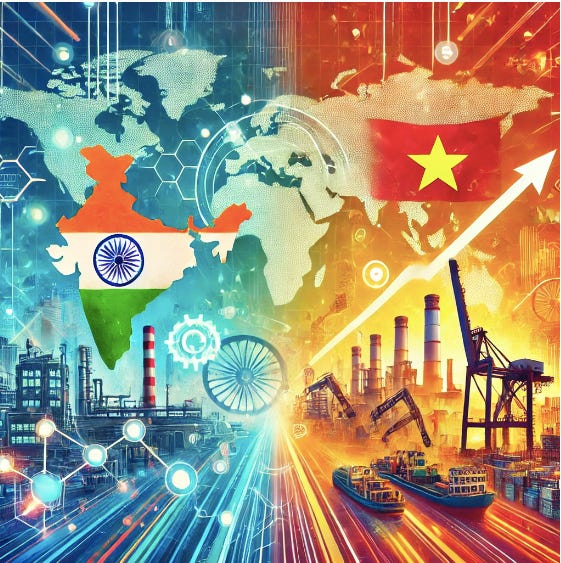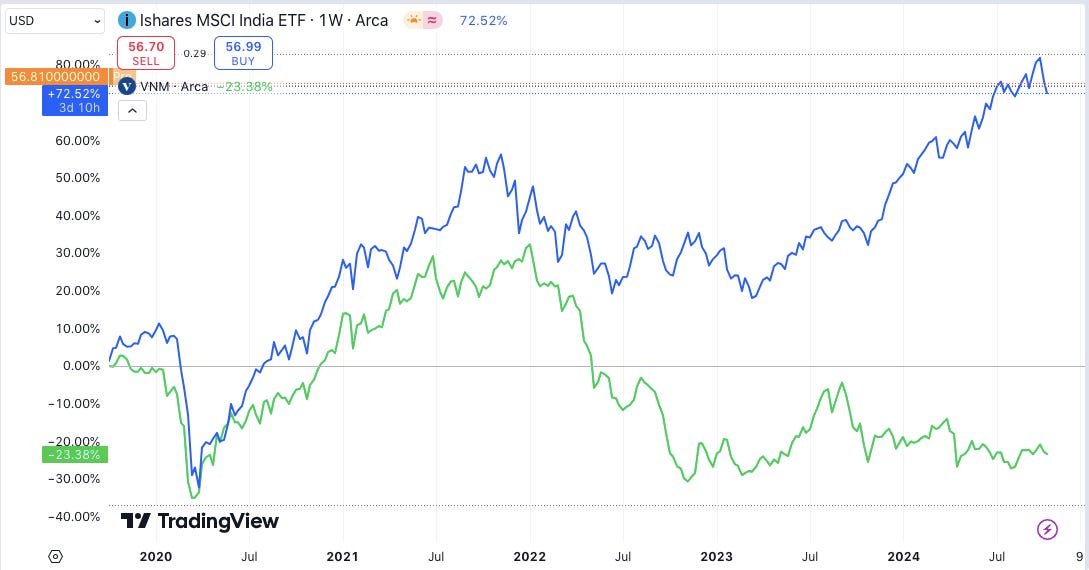India and Vietnam: Rise of the New Titans
In a rapidly shifting global landscape, India and Vietnam are rising as the new darlings of emerging markets in a multipolar world.
In the evolving landscape of global markets, two standout nations are quickly becoming the darlings of emerging markets—India and Vietnam. Their rise marks a pivotal shift in the global economic order, driven by strategic reforms, demographic advantages, and increasing integration into global trade networks. These countries are not just reacting to the multipolar world; they are helping shape it, representing unparalleled growth and investment opportunities.
Act I: Vietnam’s Ascent
In the last two decades, Vietnam has transitioned from a primarily agrarian economy to a manufacturing powerhouse. By 2021, its exports surged past $340 billion, driven by electronics, textiles, and semiconductors. Vietnam's key role in the "China Plus One" strategy has made it an indispensable player for companies seeking alternatives to China. Its low labor costs, young workforce, and proactive government policies, such as tax incentives for high-tech manufacturing and the creation of industrial zones, have attracted multinational giants like Samsung and Intel.
Vietnam's strategic participation in trade agreements like the Comprehensive and Progressive Agreement for Trans-Pacific Partnership (CPTPP) has bolstered its global integration, making it a top destination for manufacturing diversification. By positioning itself within these global frameworks, Vietnam has steadily climbed the value chain, moving from basic assembly to sophisticated electronics manufacturing.
Source: MIT institute of Economic Complexity.
Act II: India’s Awakening
Source: Gavekal Research.
While Vietnam has emerged as a manufacturing hub, India presents a broader opportunity, combining its dominance in services with an increasingly strong manufacturing base. With over 1.4 billion people and a median age of 28, India is positioned to become a global leader not only in production but also in consumption.
India’s "Make in India" initiative has attracted significant foreign investment from tech giants like Apple and Foxconn, who are now producing a significant share of their global products within the country. In addition, India's booming IT sector, which exported over $227 billion in services in 2022, underscores its dominance in software and digital services. Coupled with its massive consumer base and ongoing reforms, India is set to lead in both manufacturing and digital industries.
Act III: The Multipolar Shift
India ETF (INDA) Vs Vietnam ETF (VNM)
As global power shifts from traditional centers like the U.S. and China, India and Vietnam are poised to become central players in this new multipolar world. The decentralization of supply chains, rising geopolitical tensions, and an increasing focus on economic resilience have drawn attention to these two nations. Vietnam’s strategic location and trade agreements have made it a key player in global manufacturing, while India's sheer scale, digital prowess, and growing manufacturing base position it as a vital player in global markets.
The strategic importance of India and Vietnam in this global reordering is not just economic—it is geopolitical. These countries are becoming essential partners for countries looking to reduce their reliance on traditional economic powers while benefiting from the growth potential of emerging markets.
The Climactic Moment: Investment Implications
For investors, the rise of India and Vietnam presents a rare opportunity to tap into two of the fastest-growing economies in the world. Vietnam’s export-driven growth and role as a manufacturing hub offer substantial opportunities in industries such as electronics, apparel, and infrastructure. Meanwhile, India provides a broader array of investment possibilities, from its booming tech sector to its rapidly expanding consumer market.
Both nations are set to drive the next wave of global growth, as companies increasingly look to diversify their supply chains and tap into new consumer bases. India and Vietnam are no longer just participants in the global economy—they are becoming leaders in shaping its future.
Conclusion: A New Order
But if India and Vietnam are the new darlings of emerging markets, there’s another exciting story unfolding in the developed world—Japan. We will cover this compelling investment opportunity in our next post.
Thanks for reading,
Guillermo Valencia A
Cofounder of Macrowise.
October 8th, 2024







